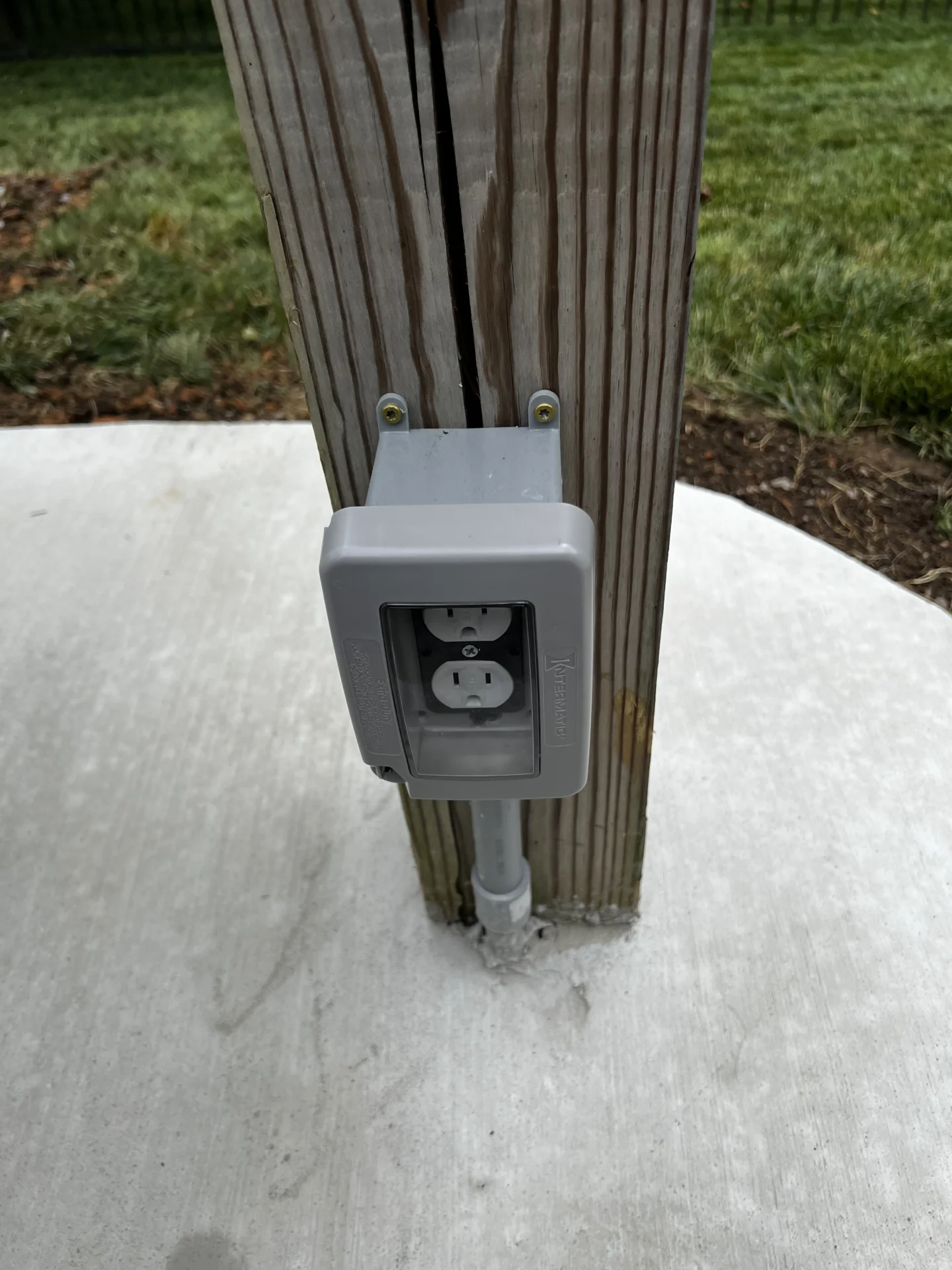Whether you’re adding new outlets to accommodate your growing electronics collection or upgrading old and worn-out outlets, understanding the process and options available is essential.
Understanding Electrical Outlets
Electrical outlets, or receptacles or sockets, are essential components of your home’s electrical system. They provide a safe and convenient way to connect electrical devices and appliances to the power supply. Understanding the different types of outlets and their functionalities is crucial for selecting the right ones for your needs.
Types of Electrical Outlets
- Standard Outlets (Type A): The most common type of outlet found in residential buildings, featuring two vertical slots for plugs and a grounding hole.
- Ground Fault Circuit Interrupter (GFCI) Outlets: Equipped with built-in safety mechanisms that trip the circuit if a ground fault or electrical leakage is detected, protecting against electric shock.
- Arc Fault Circuit Interrupter (AFCI) Outlets: Designed to detect and mitigate the risk of electrical arcing, which can cause fires, by interrupting the circuit when abnormal arcing is detected.
- Tamper-Resistant Outlets: Include built-in shutters that prevent foreign objects from being inserted into the outlet slots, reducing the risk of electrical accidents, especially for children.
- USB Outlets: These outlets feature additional USB ports alongside standard electrical outlets, allowing for direct charging of USB-powered devices without the need for adapters.
Signs You Need New Electrical Outlets
Knowing when to replace your electrical outlets is essential for maintaining a safe and efficient electrical system. Look out for these signs that indicate it’s time for an upgrade:
- Loose or Worn-Out Outlets: If plugs don’t fit snugly into the outlet or feel loose or wobbly, it may be time for a replacement.
- Burn Marks or Discoloration: Visible scorching, burn marks or discoloration on the outlet cover or surrounding area could indicate electrical issues and pose a fire hazard.
- Constantly Tripping Breakers: If a particular outlet consistently trips the circuit breaker when in use, it may be overloaded or faulty, requiring replacement.
- Outdated Outlets: If your home still has non-grounded or ungrounded outlets, it’s advisable to upgrade to modern, grounded outlets for improved safety and functionality.
- Lack of GFCI Protection: The kitchen, the bathroom, and the outside regions are all examples of places that are prone to dampness, lacking GFCI outlets poses a significant safety risk and should be addressed promptly.
Choosing the Right Electrical Outlets
Choosing the right electrical outlets involves considering various factors to meet your needs and ensure safety and functionality. Here are some expert tips to help you make the right choice:
- Outlet Type: Determine your needed outlet based on your electrical devices and appliances. Common types include standard duplex outlets (120 volts), GFCI outlets (Ground Fault Circuit Interrupter) for areas exposed to moisture, AFCI outlets (Arc Fault Circuit Interrupter) for bedrooms and living spaces, and specialty outlets for specific purposes such as USB charging.
- Location and Application: Consider the outlet’s location and intended use. For example, GFCI outlets are required in locations in close proximity to water sources, including but not limited to kitchens, bathrooms, laundry rooms, and gardens. AFCI outlets are typically required in bedrooms and living rooms to prevent electrical fires caused by arc faults.
- Ampacity: Check the outlet’s ampacity (ampere capacity) to ensure it can handle the electrical load of the connected devices. Standard outlets are typically rated for 15 or 20 amps, but higher-capacity outlets may be needed for heavy-duty appliances or equipment.
- Tamper Resistance: Consider outlets with tamper-resistant features, especially if you have children or want to enhance safety. Tamper-resistant outlets have built-in shutters that prevent foreign objects from being inserted into the receptacles, reducing the risk of electrical shocks.
- USB Charging: If you frequently charge USB-powered devices such as smartphones, tablets, or laptops, consider outlets with built-in USB ports. These outlets provide convenient charging options without needing adapters or power bricks.
- Smart Outlets: Smart outlets offer advanced features such as remote control, scheduling, and energy monitoring via smartphone apps or voice assistants. They can be programmed to turn devices on or off remotely, helping you save energy and enhance convenience.
- Aesthetic Considerations: Choose outlets that complement the style and decor of your home or workspace. Outlets are available in various colors, finishes, and designs to match your interior design preferences.
- Installation and Compatibility: Ensure your chosen outlets are compatible with your existing electrical wiring and installation requirements. Consider consulting a qualified electrician if you need clarification on installation or compatibility issues.
- Safety Certification: Look for outlets that are UL-listed or certified by reputable safety organizations to guarantee that they are up to the standards set by the industry in terms of both performance and safety.
By considering these factors and choosing outlets by ensuring that they are suitable for your particular needs, you are able to safe, functional, and aesthetically pleasing electrical installations tailored to your needs. If you need help deciding which outlets seek the guidance of an experienced electrician in order to select them or to learn how to install them.
The Installation Process
While replacing a basic outlet can be a DIY-friendly project for those with electrical experience, a licensed electrician should handle more complex installations or upgrades. Here’s an overview of the installation process:
- Assessment: The electrician will assess your home’s electrical system and identify the optimal locations for new outlets based on your needs and preferences.
- Wiring: If installing new outlets, the electrician will run electrical wiring from the existing circuit to the desired locations, ensuring proper sizing and connections.
- Outlet Installation: The electrician will securely mount the new outlets to the wall or electrical box, ensuring they are level and properly aligned.
- Testing: Once the installation is complete, the electrician will test each outlet to ensure proper functionality, polarity, and grounding, making any necessary adjustments or corrections.
Maintenance and Care
To ensure the longevity and safety of your electrical outlets, follow these maintenance tips:
- Regularly inspect outlets for signs of wear, damage, or overheating, and replace any faulty outlets immediately.
- Keep outlets clean and free of dust, debris, and obstructions to prevent poor connections and overheating.
- Use power strips and surge protectors for additional outlets to avoid overloading outlets and distribute electrical loads evenly across circuits.
- Test GFCI outlets monthly and reset them if necessary to ensure proper functionality and protection against electrical shocks.
- Schedule regular electrical checks with a qualified electrician in order to spot any potential problems and address potential issues before they escalate.
At The Go-To Crew Electric, we’re committed to providing top-quality electrical services to enhance your living space’s safety, functionality, and convenience. If you’re ready to upgrade your electrical outlets or have any questions, don’t hesitate to contact our team of experts. Let’s power up your home together!



